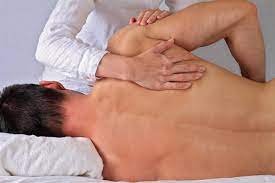Accidents can happen anytime, anywhere, and to anyone. Whether it’s a car accident, a sports injury, or a slip and fall, the effects of the accident can be life-altering. Injuries sustained during accidents can result in pain, discomfort, and reduced mobility, which can have a significant impact on the individual’s quality of life. However, with the help of physiotherapy, post-accident rehabilitation can help restore mobility and function, enabling individuals to regain their independence and improve their overall well-being.
Understanding Post-Accident Rehabilitation
Post-accident rehabilitation is a process that involves various healthcare professionals working together to help individuals recover from their injuries. Physiotherapy is a crucial component of post-accident rehabilitation, which involves the use of physical techniques, such as exercise, massage, and manipulation, to help restore function and mobility.
The Role of Physiotherapy in Post-Accident Rehabilitation
Physiotherapy plays a vital role in post-accident rehabilitation by helping individuals regain their strength, flexibility, and range of motion. After an accident, the injured area may become stiff, painful, and difficult to move, which can limit the individual’s mobility and ability to perform everyday tasks. Physiotherapists use various techniques, such as stretching, strength training, and massage, to help reduce pain and stiffness and increase flexibility and mobility.
Physiotherapy also helps prevent the development of secondary complications that may arise from the injury. For example, if an individual has a leg injury that prevents them from walking, they may experience muscle weakness, which can lead to further complications such as joint stiffness and decreased mobility. Physiotherapy can help prevent these complications by maintaining muscle strength and flexibility.
The Benefits of Physiotherapy in Post-Accident Rehabilitation
Physiotherapy has numerous benefits for individuals undergoing post-accident rehabilitation. These benefits include:
- Pain Reduction: Physiotherapy can help reduce pain and discomfort caused by the injury, allowing individuals to move more freely and perform everyday activities without discomfort.
- Improved Mobility: Physiotherapy helps improve mobility by increasing flexibility, strength, and range of motion. This enables individuals to perform activities of daily living and participate in leisure activities without difficulty.
- Prevents Secondary Complications: Physiotherapy can help prevent the development of secondary complications such as joint stiffness and muscle weakness that may arise from the injury.
- Faster Recovery: Physiotherapy can help individuals recover faster after a car accident by improving circulation, reducing inflammation, and promoting healing in the injured area.
Conclusion
Post-accident rehabilitation with physiotherapy plays a vital role in restoring mobility and function in individuals who have suffered injuries. The use of physical techniques such as exercise, massage, and manipulation can help reduce pain and stiffness, increase flexibility and range of motion, and prevent the development of secondary complications. By improving mobility and reducing pain, physiotherapy can significantly improve the quality of life of individuals undergoing post-accident rehabilitation.








